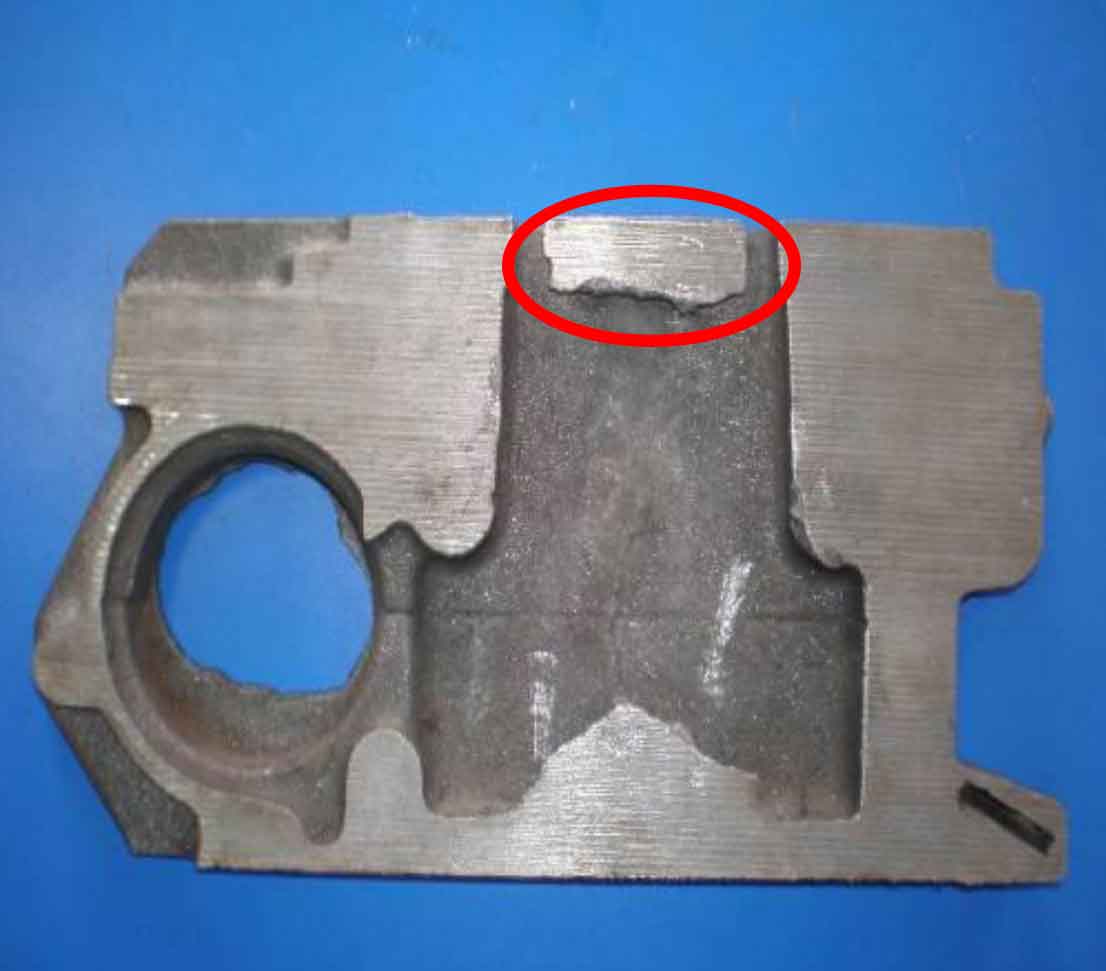Volkswagen series product – a cylinder block a, there was a batch of local core breaking defects at the bottom center of both ends of the water jacket, as shown in the figure. Due to the broken core, there is a gap between the core and the core. After the metal liquid entering the broken core gap solidifies, the casting is connected, resulting in more meat on the inner cavity surface of the cylinder block. Because the meat is inside the cylinder block, the pneumatic milling cutter and other cleaning tools cannot be cleaned. The broken core not only affects the surface quality of the water jacket, but also seriously affects the cooling water circulation in the inner cavity of the engine cylinder block. It must be scrapped. Sometimes, the single scrap rate is sometimes as high as more than 10% and remains high.
Through the analysis of the fleshy part of the water jacket, it is found that the part where the local core fracture occurs is the weak part of the sand core of the whole sand casting, with a wall thickness of only about 3mm and at the edge of the sand shooting nozzle, so the adhesion is weak and loose defects are easy to occur. When the temperature reaches 573 ℃ during the pouring process, the structure of the quartz sand will change, that is, the quartz sand is formed by β Transformation of quartz sand into α The phase transformation of quartz and quartz sand causes the rapid expansion of the sand core volume of sand mold casting, so that the sand core of sand casting produces large phase transformation stress. When it is greater than the high-temperature bonding force of the sand core of sand casting at this position, it will produce cracking phenomenon, and then it will separate from the water jacket core matrix under the impact force of molten iron to form local core breaking defects. Based on this analysis, the technological measure is to increase the wall thickness and bond strength of the sand core of the sand casting, so as to solve the core breaking defect.

